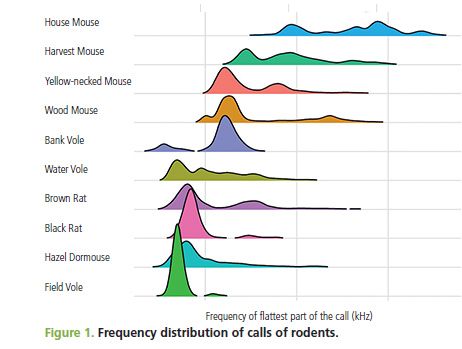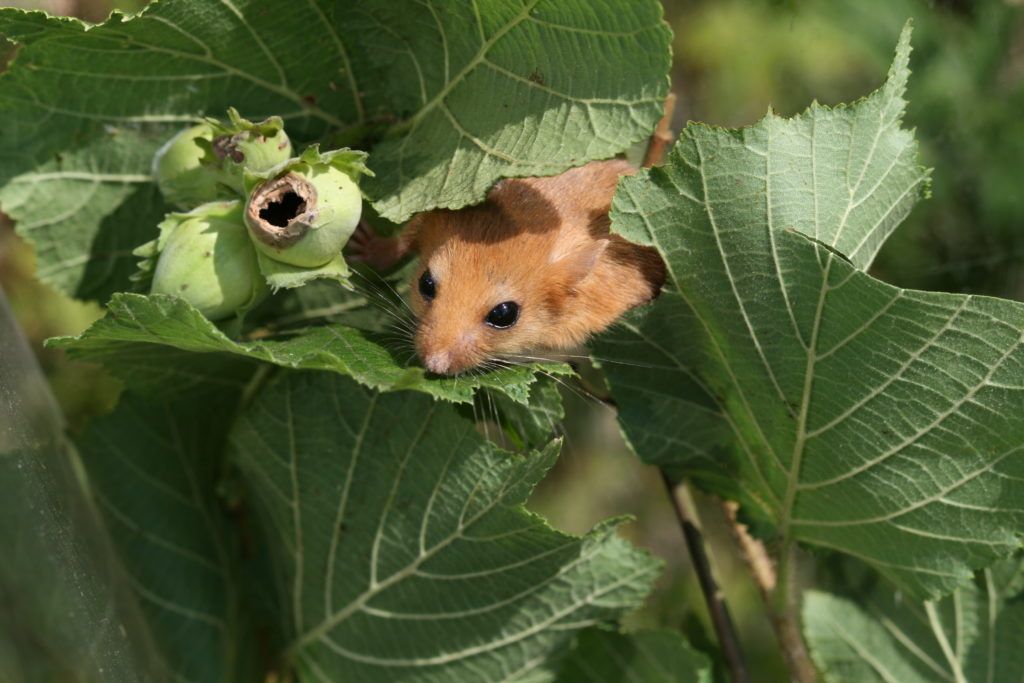Voles, rats, shrews, mice, and hazel dormice can be difficult to study. Their size and behaviour make them hard to find and, living predominantly in the shrub layer and being nocturnal, makes hazel dormice even more tricky. Occasionally though, these small creatures give themselves away by their vocalisations. Whilst we may hear an indistinguishable high-pitched squeak if we’re lucky, the calls small mammals make can be complex, and are largely outside our hearing range. Small mammals make calls for many different reasons. Young and their mothers call to one another, whilst other individuals communicate vocally when they have aggressive or non-aggressive encounters with other animals of the same species, including in courtship displays.
Bioacoustics and bats
If acoustic surveys can provide information on species presence for small mammals, they could help fill in gaps for species for we know little about. Bioacoustics is less intrusive than traditional methods and, being less labour-intensive, could be used over larger areas. If used in combination with traditional survey methods, bioacoustics could help target more intensive survey work towards promising sites. Because the calls of small mammals are within the frequency range of bats, small terrestrial mammals are commonly recorded as ‘by-catch’ during bat surveys. However, until very recently, nothing had been written on the sound identification of many species of small mammals in Britain, and when it comes to bioacoustics, small mammals had been largely overlooked.
A call library of mammals
A team from British Trust for Ornithology, Batability and MostlyBats, has been busy trying to fill this gap. They’ve been working on building a ‘call library’ of Britain’s small mammals. The range of calls that each species can make is highly varied, so hundreds or even thousands of calls are needed from lots of animals of different ages and both sexes. The team made recordings of calls from captive and wild-caught animals held overnight in a ‘recording studio’. They recorded thousands of calls from all our small mammal species, including over 11,000 of hazel dormice and 75,000 of common shrew! As you can imagine, some species have more distinct calls than others.
Hazel dormouse calls
Adult hazel dormice have five broad classes of ultrasonic calls, two of which are only made by the males, which relate to various social behaviours such as territoriality, mother– infant calls, isolation, and courtship. The species with the most similar calls to hazel dormice are brown rats. One way to distinguish between the two is to look at the timbre of recordings when they are slowed down by ten times. Hazel dormouse calls have an unpredictable vibrating or fluctuating quality that is similar to a whistling kettle, while brown rats tend to produce vocalisations that have a clear and more constant electronic-like sonority.
Having built an extensive call library, the next step was to build a tool to help look for, and automatically identify small mammals calls when recorded as ‘by-catch’ during bat surveys. Having already built a cutting-edge tool for bats and bush-crickets the next step was to ‘train’ the ‘bat classifiers’ to also identify small mammals. These have now been developed as part of the BTO Acoustic Pipeline, which hosts acoustic projects, and sound files of bats and other species groups, including small mammals.
The next steps include further work on the call library and ‘bat classifiers’ and testing in the field. For anyone interested, a sound library of wav files covering different call types of small mammals can now be downloaded for free, where there are also playable spectrograms.
This article was written from the original paper published in British Wildlife: Newson, Middleton & Pearce 2020 The acoustic identification of small terrestrial mammals in Britain British Wildlife 32 (3) pp.186-194, also accessible here.


